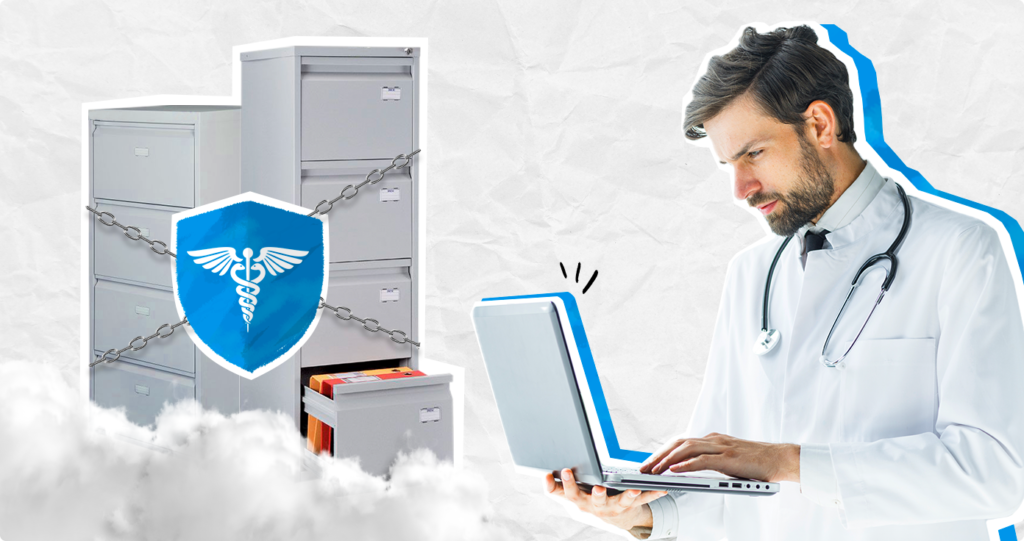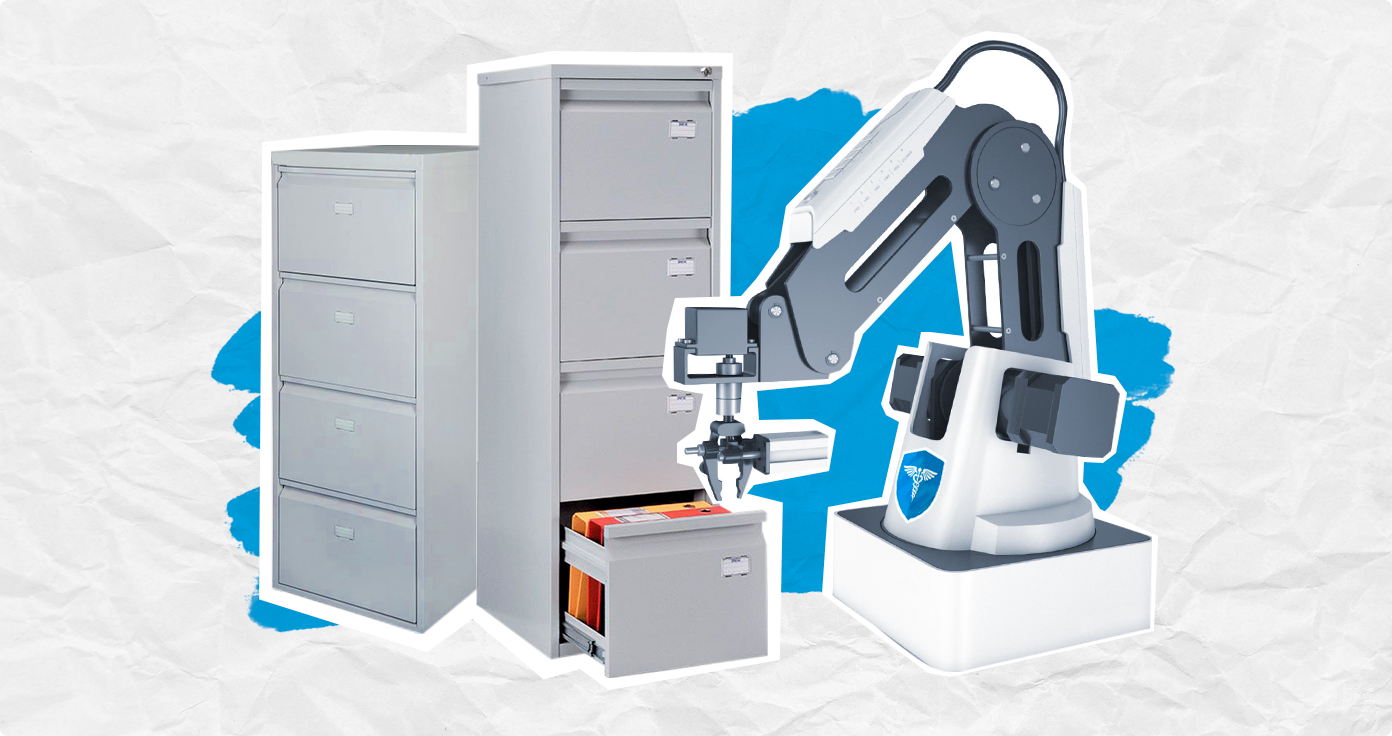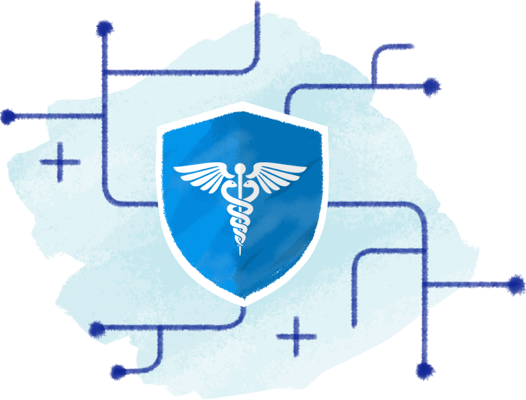
This is not a time to be taking risks
Protect health information with HIPAA compliant workflows

Healthcare is one of the areas that have dramatically changed due to the boost of modern technology like AI and automation. Thanks to automation, healthcare organizations can say “bye” to mundane and time-consuming tasks and put the client’s comfort and quality medical service first and as a top priority. Moreover, they can protect health information by creating HIPAA compliant workflows.
However, automation in healthcare is not only about streamlining tedious and routine tasks. In many cases, it becomes doctors’ ultimate helping hand in managing documentation and communication remotely and in a very quick way, especially when there is no time to wait. Today, during a pandemic like COVID-19, this has become clearer than ever.
But still, even during pandemics, it’s also important to stay compliant with necessary data regulations. To prevent getting distracted from primary tasks, healthcare specialists tend to find HIPAA compliant workflow automation platforms vital for streamlining operations and securing medical information at the same time.
In this blog, we’ll help you understand how to create HIPAA compliant workflows and use them in the most efficient ways: at work, on the go, at home.
HIPAA compliance is corresponding to the elements of the Health Insurance Portability and Accountability Act. I.e., companies that deal with protected health information (PHI) must have a physical, network, and process security measures in-house and follow them strictly.
The Health Insurance Portability and Accountability Act (1996) is a series of standards that regulate the use and disclosure of protected health information.
Protected health information (PHI) is demographic information that identifies a patient or client of a medical organization, a healthcare provider, health issuer, i.e., by a HIPAA-covered entity and/or their business associate(s).
Covered Entity is anyone who provides treatment, payment, and operations in healthcare. Covered Entities are:
Business Associate is a vendor or subcontractor who has access to PHI. In other words, this is an entity that uses or discloses PHI on behalf of a Covered Entity. Also, it includes a person who (even on behalf of a Covered Entity) assists in using or disclosing PHI. Business Associates can be:
PHI includes past, current and even future health information about medical conditions or the physical and mental health of a patient. Health information may be presented in any form, as physical records, electronic records, or as spoken information.
Protected health information includes health records, health histories, lab test results, medical bills as well as demographic information such as patients’ names, addresses, phone numbers, Social Security numbers, medical records, financial information, photos of the face, etc.
The 18 identifiers that fall under PHI:
Note that all PHI that can be transmitted, stored, or accessed electronically is under HIPAA regulatory standards. When PHI is digital, it’s known as electronic protected health information, or ePHI. ePHI is regulated by the HIPAA Security Rule, which was an addition to the HIPAA regulation. We’ll discuss that a little bit later.
One or more of these points make health information fall under PHI and PHI HIPAA Privacy Rule restrictions. That means, as an example, your healthcare provider cannot disclose any of the above information to third-parties.
HIPAA covered entities and their business associates will also need to implement appropriate technical, physical, and administrative safeguards to ensure the confidentiality, integrity, and availability of PHI, as stipulated in the HIPAA Security Rule.

This is not a time to be taking risks
Protect health information with HIPAA compliant workflows
The first exception depends on who (or what) records the information. An example would be health trackers (devices worn on the body or apps on mobile devices). They can record heart rate and blood pressure, which should be considered PHI under HIPAA Rules. However, HIPAA applies only to HIPAA-covered entities and their business associates. That means that if a HIPAA-covered entity has not contracted the device manufacturer (or app developer), the recorded data would not be considered PHI.
The same goes for education and employment records. A healthcare institution may keep data on its employees, including their health information. However, HIPAA doesn’t apply to employment and educational records.
Many different HIPAA rules finally made up the HIPAA regulation.
To help minimize security risks and ensure successful doctor-patient relationships, consider keeping the following measures in mind:
Self-audits: are required for covered entities and business associates. Doing annual audits makes it possible to assess administrative, technical, and physical gaps pertaining to HIPAA Privacy and Security standards.
Remediation plans: should be prepared in case a gap in compliance is found. They’re for assuring that an organization can fix issues to avoid compliance violations. Plans and dates have to be set for fixing the gaps (make sure to document your remediation).
Policies, procedures, and employee training: should be developed to make sure they correspond to the HIPAA standards. Regularly update them to keep up with the changes in the organization and provide annual training courses for staff members.
Efforts for HIPAA compliance: should be documented to help an organization avoid fines. It is critical during HIPAA investigations that an organization can provide proof of its efforts to stay or become HIPAA compliant to pass strict HIPAA audits.
Business Associates: are all the vendors with whom you share Protected health information. It’s necessary to manage these relationships and execute the proper Business Associate Agreements. Doing that ensures that PHI is securely handled. Review Business Associate Agreements annually to keep up with the organizational links and changes with vendors.
Incidents: need to be documented and adequately kept in cases where a covered entity or business associate has a data breach. All patients and clients have to be notified about breaches.

Here are some of the most common causes of HIPAA violations and fines:
Now that we’ve reviewed important points about HIPAA compliance, let’s figure out how to manage healthcare processes and streamline them while keeping up with security regulations.
About 50% of a healthcare institution’s budget is wasted because of inefficient processes. The financial benefits of implementing optimized workflow processes in healthcare across the US have been between $37M and $59M in a period of five years.
One of the most inefficient processes is a poorly-managed patient flow. A smooth patient flow prevents overcrowding, delays in care deliveries, etc. Reality shows that hospitals, in particular emergency departments, are overcrowded and characterized by lengthy wait times. This process is closely connected with one of the most time-consuming workflows in healthcare, collecting approvals. Every document containing PHI needs to be signed off by a doctor or several doctors, administrators, etc. You never know how much time it can take. Doctors focus more on primary tasks that are curing patients and saving lives and usually forget about the paperwork. At the same time, without this particular documentation, other doctors can’t start healing a patient and so on.
That is where bot automation comes to the rescue. With an automated workflow, a physician, patient, administrator, etc., can exchange and sign the necessary documents in real-time and without need for physically finding this person. Automation bots will notify the necessary party to sign the document, review, or fill it out. It all depends on the conditions you set.
A costly HIPAA violation is sending PHI to the wrong patient/contact. The penalty for this violation can cost your organization up to $50,000. The general atmosphere of clinics and hospitals isn’t one of pleasant or calm attitudes towards document related issues. And ensuring that particular information is entered and approved by the correct individuals takes time, involves chasing people down, leads to approving documents without looking and thinking, skipping steps in a process, and even more.
Developing an automated workflow in healthcare allows for data to be automatically transferred to the patient/client, and back. This eliminates the need of having to routinely enter the same details over and over again. For example, such business automation platforms like airSlate enable data and document exchange from any data system, i.e., CRM, ERP, Cloud Storage, SQL database, or a .csv table. Data and document exchanges are carried out via airSlate’s Bots. Simply put, you set particular conditions — and Bots fulfill them. More than 82% of healthcare professionals claim that electronic prescriptions save time and minimize the amount of human interaction required to complete their processes.
As one more example we’ll list burnout. Today, during the coronavirus pandemic, we can understand it better than ever before.
And even during periods of mild health issues, no pandemics or abnormal situations like war or natural disasters, 50% of physicians suffer from burnout. The most common reasons for that are the loads of non-clinical tasks such as reporting, billing, and managing documentation.
Organizations that use business automation platforms are able to fully audit patient records in 1.4 hours compared to 3.9 hours with paper auditing systems.Automated healthcare workflows also significantly minimize the risk to personnel, who otherwise would be subjected to very close proximity to unwell people. Of course, this is a doctors’ reality, and it’s not possible to avoid patients completely. However, today it’s critically important to try as much as possible to preserve the energy and health of our doctors. With automated workflows there’s no need to re-meet with patients to clarify details or sign documents. You can send, sign, and access any necessary administrative data and documentation from any device, even while working from home.
First of all, the business automation platform you use should be 100% HIPAA compliant. You’ll find all the information you need on the security page.
Platforms like airSlate make the transferring of confidential patient documents between designated authorities and systems of records possible without human interaction. You can choose what information on documents will be visible or obscured for specific recipient roles.

To help minimize security risks and ensure successful doctor-patient relationships, consider keeping the following measures in mind:
Conduct self-audits
Prepare remediation plans
Develop policies, procedures and employee training
Document all the efforts
Keep track of Business Associate Management and Incident Management
Automate healthcare processes
Check if your workflow automation solution is HIPAA compliant
Save your time and efforts for primary tasks